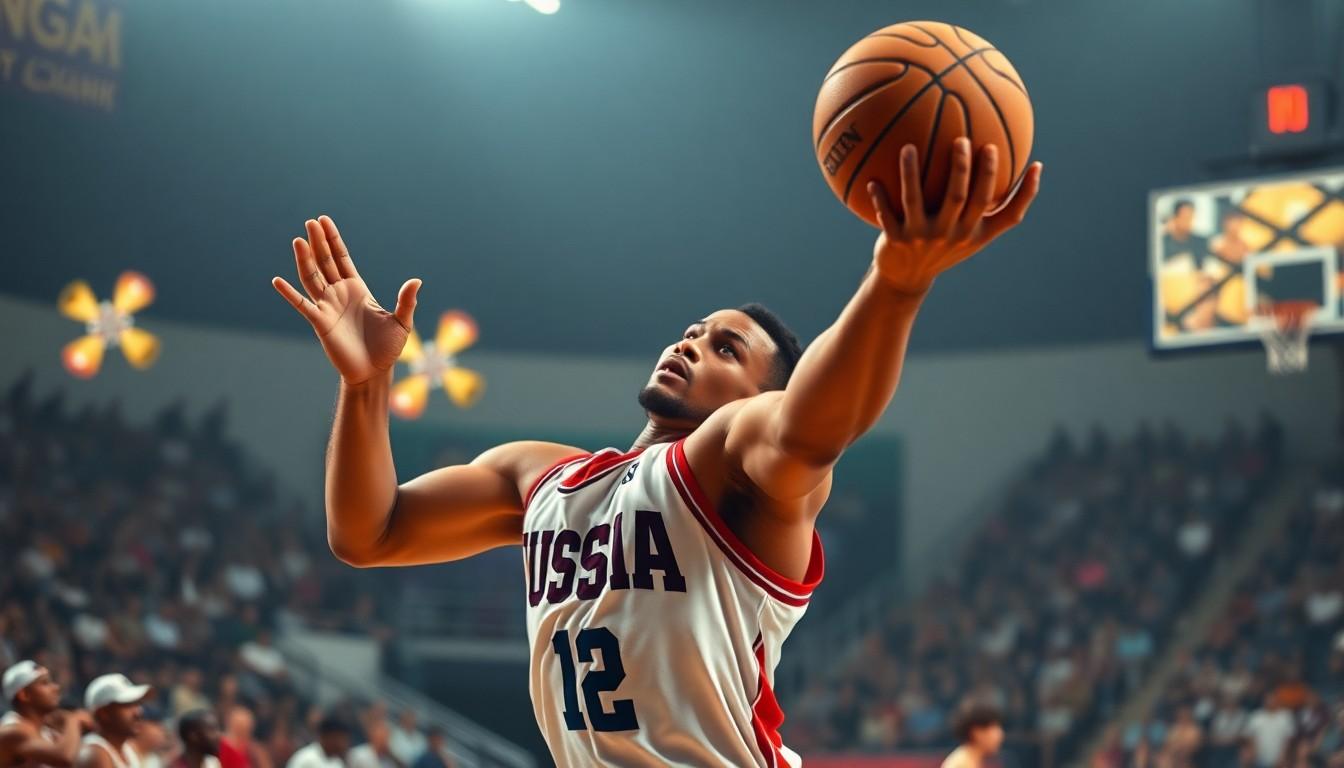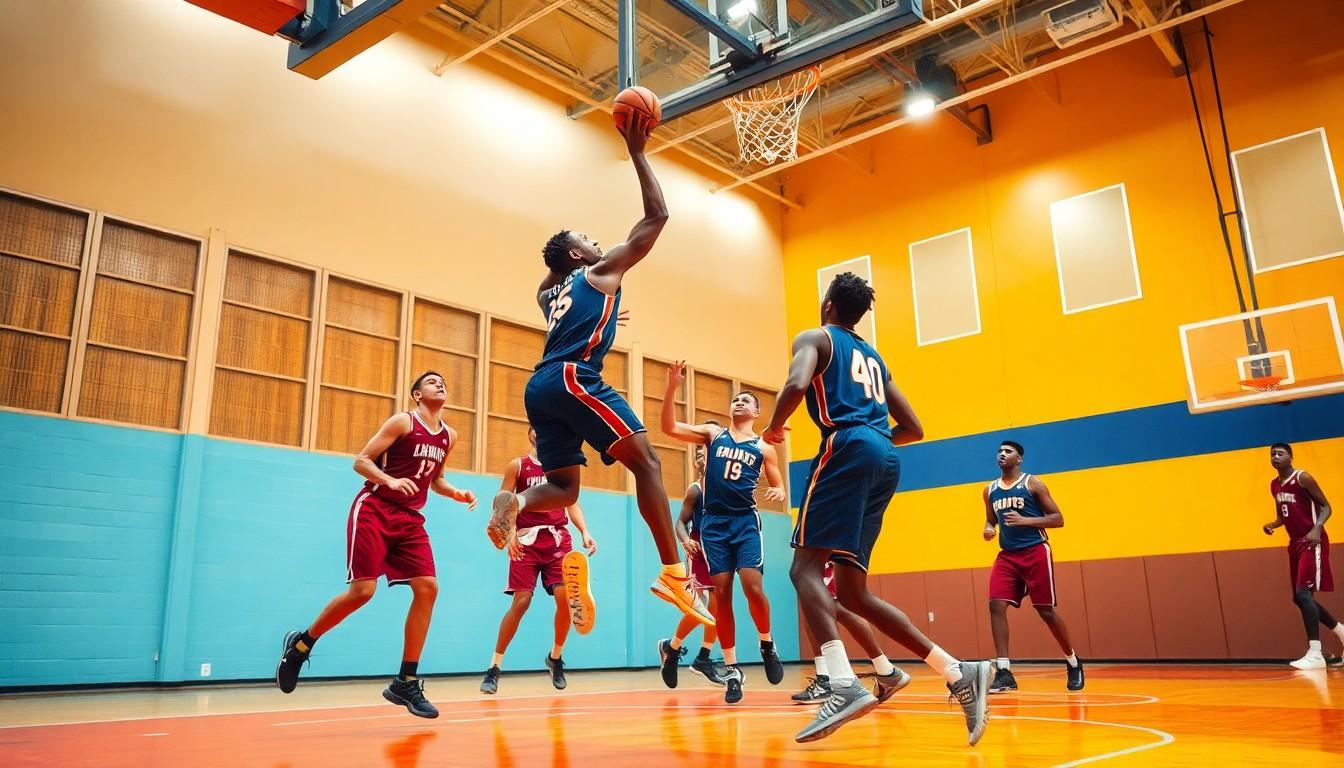In the fast-paced world of basketball, jargon flies around like a well-aimed three-pointer, leaving fans and newcomers scratching their heads. One term that often pops up is “RPG,” but don’t worry—it’s not a new video game or a secret code for a basketball club. It stands for rebounds per game, a vital stat that can make or break a player’s performance.
Table of Contents
ToggleUnderstanding RPG in Basketball
RPG, or rebounds per game, represents a critical statistic in basketball that highlights a player’s ability to secure rebounds. This metric helps evaluate scoring opportunities and defensive efforts throughout a game.
Definition of RPG
Rebounds per game quantifies the average number of rebounds a player collects during each game. It combines both offensive and defensive rebounds, offering a holistic view of a player’s rebounding skills. A player with high RPG effectively contributes to their team’s possession and scoring potential, making it an essential aspect of basketball performance analysis.
Importance of RPG in the Game
RPG plays a vital role in team dynamics and strategy. A player boasting a high RPG typically helps control the game’s tempo and provides second-chance scoring opportunities. Effective rebounding can shift momentum in a game, influencing overall outcomes. Coaches prioritize players with impressive RPG when assembling rosters, as these athletes enhance both offensive strategies and defensive efforts.
Calculating RPG

Calculating RPG involves a straightforward formula that reflects a player’s rebounding effectiveness. The formula used is:
[ text{RPG} = frac{text{Total Rebounds}}{text{Games Played}} ]
This calculation considers both offensive and defensive rebounds. A player’s total rebounds count represents the sum of these two types. By dividing the total rebounds by the number of games played, fans and analysts can determine the average rebounds secured each game, highlighting the player’s contribution to the team’s performance.
Formula for RPG Calculation
Understanding the formula for RPG is essential for evaluating rebounding performance. Rebounds count includes all instances where players successfully retrieve the ball after a missed shot. To compute RPG, total rebounds must be tallied over a specified number of games. This allows for accurate representation of a player’s rebounding proficiency.
Factors Affecting RPG
Several factors influence a player’s RPG. Playing time significantly impacts rebounding opportunities; more minutes on the court generally lead to higher rebound counts. Team strategy, including offensive schemes and defensive setups, also determines how effectively players can contribute. Individual attributes, such as height, strength, and vertical leap, further enhance rebounding potential. Finally, the quality of teammates, including their shooting accuracy, can create or limit available rebounds, affecting overall RPG statistics.
RPG in Player Performance
RPG serves as a critical gauge of a player’s influence on the court. By assessing rebounds per game, fans and analysts can determine a player’s overall contribution to team success.
RPG as a Performance Indicator
RPG reflects a player’s effectiveness in securing possessions. Higher RPG figures correlate with greater control of the game, enhancing opportunities for scoring. Players who excel in this statistic often display hustle and tenacity, traits essential for sustaining offensive and defensive efforts. Evaluating RPG allows teams to identify rebounding specialists, often influencing game plans and strategies. A player’s RPG aids coaches in pinpointing roles within the team, facilitating game-time decisions based on rebounding performance.
Comparing RPG Across Positions
RPG varies significantly among different player positions. For instance, centers and forwards typically post higher RPG averages due to proximity to the basket, where more rebounds are available. Guards, while still important in rebounding, may have lower RPG because of their primary focus on scoring and playmaking. Evaluating the RPG of each position provides crucial insights for recruitment and player development. By comparing RPG across positions, teams can strategically assemble rosters that balance rebounding prowess with other skills, ensuring comprehensive team performance.
Historical Context of RPG
RPG, or rebounds per game, has evolved significantly since its inception in basketball statistics. Originating as a basic measure of rebound effectiveness, the metric now serves as a cornerstone for analyzing player impact.
Evolution of RPG Metrics
RPG metrics gained prominence in the 1970s, aligning with the rise of advanced statistical analysis in basketball. Initially, these numbers provided an overview of players’ rebounding capabilities, yet they lacked nuances. Over time, analysts integrated RPG with other statistics, enhancing understanding of its implications on overall gameplay. Techniques such as tracking offensive and defensive rebounds separately emerged, contributing to deeper insights. Today, RPG functions alongside metrics like Player Efficiency Rating, showcasing its role in evaluating overall player contributions.
Notable Players and Their RPG Statistics
Legends of the game have left their mark with impressive RPG figures. Wilt Chamberlain averaged an astounding 22.5 rebounds per game throughout his career. Bill Russell, known for his defensive prowess, boasted an impressive 22.5 RPG during the 1960 season. Current stars like Rudy Gobert continue this legacy, achieving high RPG averages, demonstrating the ongoing importance of rebounding in game strategy. These players exemplify how mastery of RPG influences team success and reflects individual talent in rebounding.
Conclusion
Understanding RPG in basketball is essential for appreciating a player’s contribution to the game. This statistic not only highlights individual performance but also reflects a player’s impact on team dynamics. Those with high RPG figures can shift the momentum of a game and create vital scoring opportunities.
As basketball continues to evolve, the significance of RPG remains steadfast. It serves as a key metric for coaches and analysts alike, guiding decisions on player development and team strategy. By recognizing the importance of rebounds per game, fans and players can gain deeper insights into the nuances of basketball performance.



